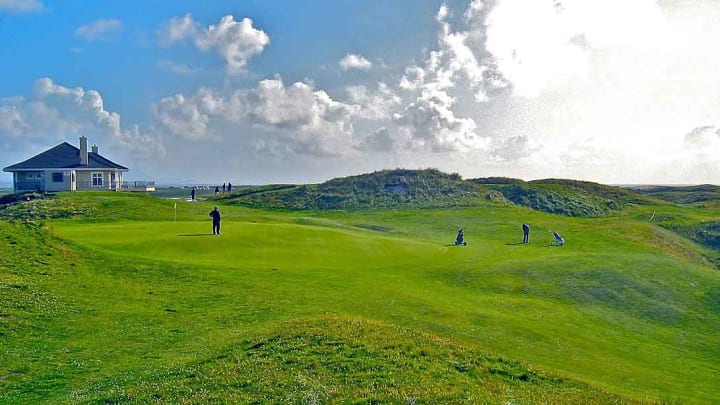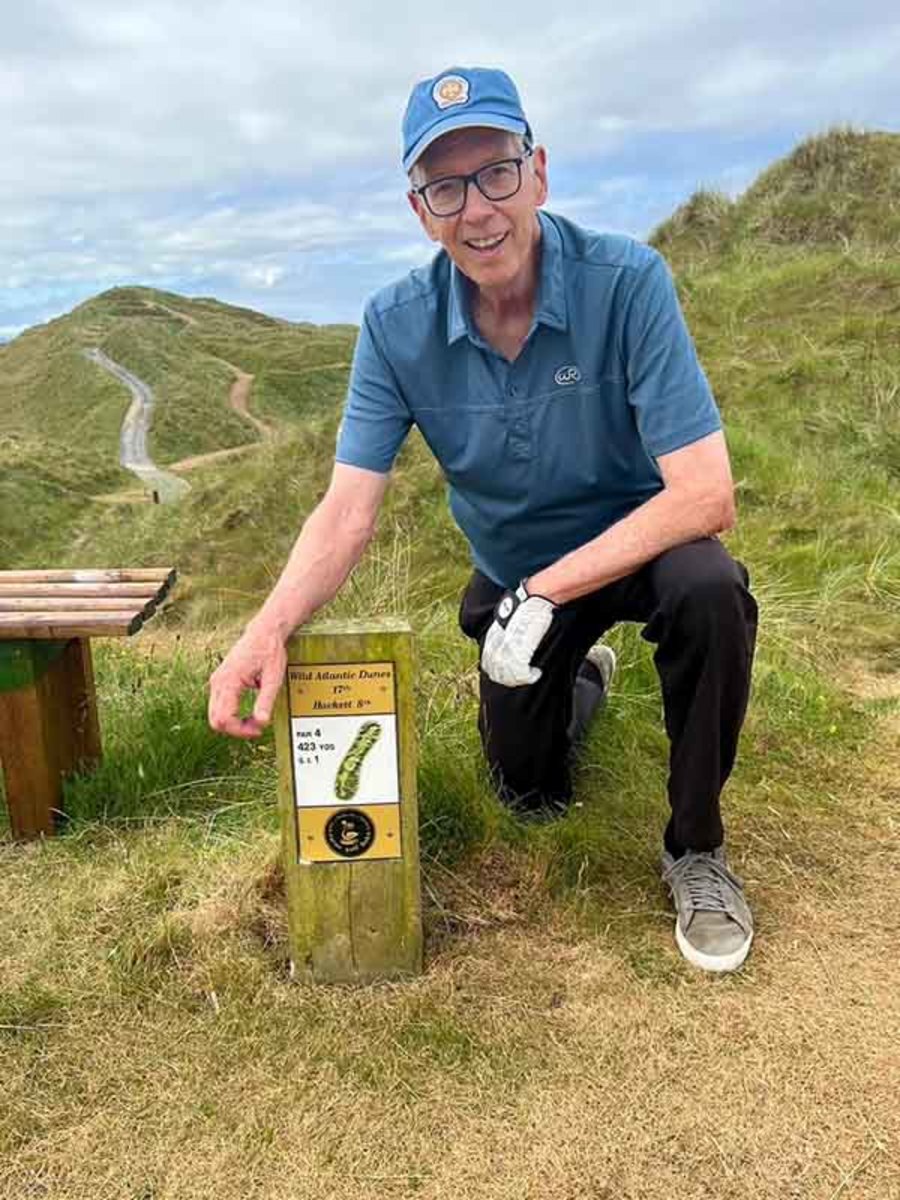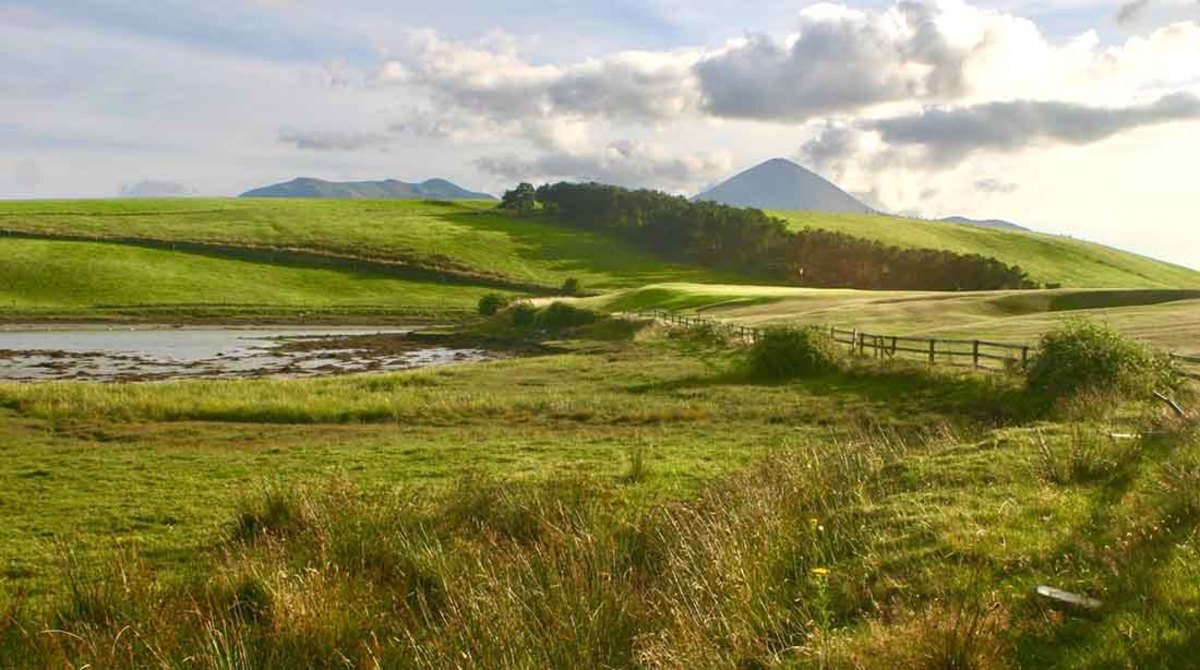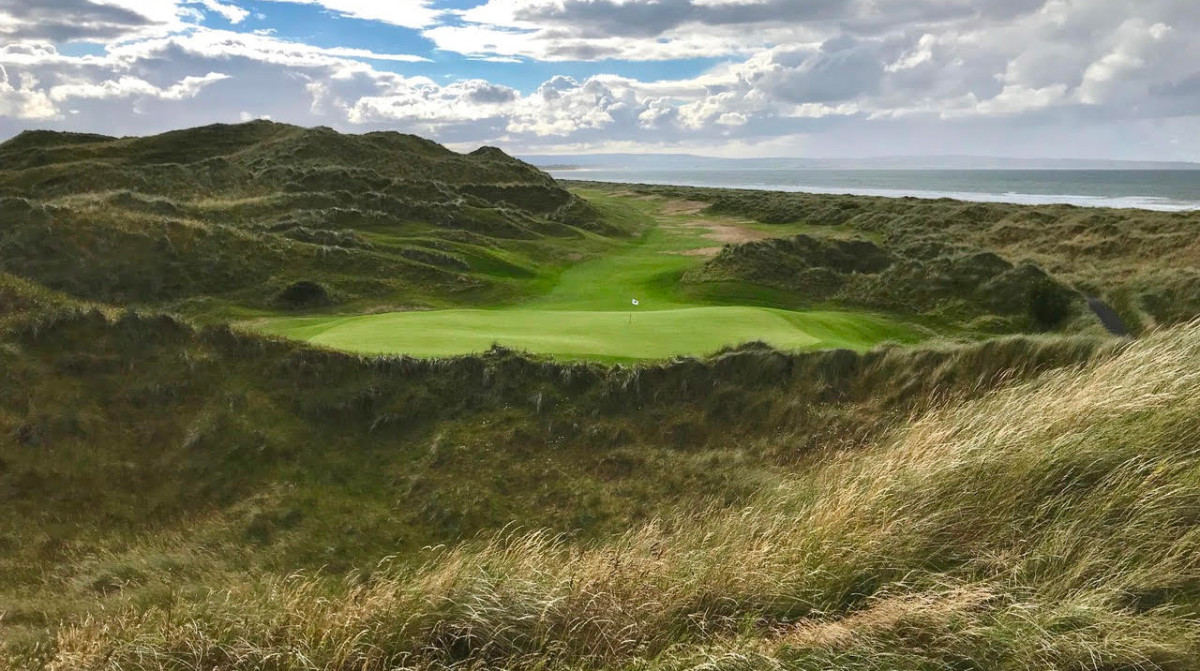Carne Golf Links is a Reminder of Everything That's Great About an Irish Golf Trip

“How did you get to be such an Irish golf authority?” I was asked, having just admitted that I have never played Rosapenna, Tralee, Waterville and a dozen other famous Irish courses.
“I’m not an Irish golf authority,” I replied. “I’m a Carne Golf Links authority.”
It’s a claim I’ve made since 2007, when I rented an apartment at the end of the rainbow to research a book called Ancestral Links: A Golf Obsession Spanning Generations. That book, along with Tom Coyne’s A Course Called Ireland, made the case that Carne is the world’s most dramatic and memorable links. “Carne is absolutely brilliant,” Coyne wrote. “Front nine, back nine, every hole, every hill.” Not to be outdone, I designated Carne “World No. 1” on my online course-ranking site.
Imagine my embarrassment, then when—playing Carne recently for the first time since the COVID-19 lockdown—I got lost. No, not lost. Disoriented. Leading three semi-retired American golf writers from the amphitheater 16th green, I stopped abruptly on the path between towering dunes. Signs with arrows pointed in various directions: we could play hole No. 8 of the Hackett course or No. 17 of the Wild Atlantic Dunes course (same hole, apparently) or WAD No. 8, which I recognized as the par-5 fifth of the Kilmore Nine.
“It’s simple,” Erris Tourism general manager Gerry Maguire explained after our round. “Five is eight, nine is twelve, Kilmore No. 1 is 13 and 17 is still 17, unless you’re playing the Hackett Course ….”
Gerry’s grin told me he was kidding … sort of. Carne’s original eighteen, mapped out by Irish links genius Eddie Hackett and built on a shoestring budget in the 1990s, is the course I describe in Ancestral Links. (“The wind was blowing west-southwest at twenty-five to thirty knots, gusting to forty, and if you wonder why I use nautical parlance, try playing Carne on some cold gray morning when the clouds hang low and the great dunes resemble Atlantic swells in a hurricane.”) However, the nines have been reversed, turning the 17th hole,—which I played hundreds of times by myself for the book, don’t ask—into a No. 8.
But Carne has a third nine, designed by America’s Jim Engh and Scotland’s Ally McIntosh. The new holes, known as the Kilmore Nine, snake through a dunescape so rugged that seagulls and ravens risk injury when they land. I remember the Kilmore as a discreet nine with some of the most beguiling holes in Ireland, but now it is half of a composite layout called the Wild Atlantic Dunes course. At 6,685 yards, Wild Atlantic Dunes has hosted the last two Irish PGA Championships and is a must-play on any golfer’s tour of Ireland’s northwest.
Which brings me to the purpose of this essay. Fans of Ancestral Links often write me for advice about an Irish golf trip. If they’re first-timers, I tell them to book a motor-coach tour with an established operator through Ireland.com. (No hassle over hotels and meals, no “wrong side of the road” issues, guaranteed tee times.) But if they’re looking for a richer, more engaging experience, I suggest they forego the “seven courses in six days” approach and instead play multiple rounds on one or two of Ireland’s fabulous links.
My bullet points:
- More time playing golf, less time buckled into a coach seat.
- Round-the-clock residence in a charming Irish town or village.
- A superior golf experience.
A links course, remember, is an unusual beast. Carne has holes where you can’t see the green from the tee—or from the fairway, either, depending on where you’ve landed. The fairway of the par-5 eighth hole snakes around a gigantic dune, denying one even a hint of the green’s defenses. Visitors typically lay up to the left—a dull shot to a dull strip of fairway—because Jim Engh isn’t there to tell them they can get home with a rocket launch over the dune. Similarly, a first-timer watching his pitch shot to the 15th green turn right and roll fifty yards into the rough will cry foul … until he sees a member of the Belmullet Golf Club pitch left of the green, knowing the dune will send his ball on a slow, contemplative journey around the green and down to the hole.
Play Carne once, in other words, and you check a box on your bucket list. Play Carne two, three or four times and you begin to learn its subtleties, take ownership of your game, and have a lot more fun.
My recent trip, in early June, provides a template for what I call “the Ancestral Links Golf Package.” Meeting my golf-writer pals at Dublin Airport on a Monday morning, I took the wheel of a rental van and set off on the four-hour drive to the barony of Erris—which takes six hours because I stop for lunch in Longford, follow the most scenic routes, and drive 20 kph slower than the locals. Nevertheless, the sun was still high in the sky when we rolled into Belmullet, a town of a thousand pinched between Broadhaven and Blacksod bays.
We dumped our luggage at the vacation house I had rented and drove out to Carne for hugs in the golf shop and a spontaneous romp around Hackett’s original back nine. These holes skirt the biggest dunes, take a sharp left at the Atlantic Ocean, and then follow a roller-coaster route back to the clubhouse. On a sunny afternoon, golfers discover what Tom Coyne meant when he wrote that Carne “was dropped smack in the heart of the lovely Irish nowhere.”
The rest of the week did not go according to plan—because there was no plan. We played every day, but mealtime ruled. Scones, sausage rolls and breakfast croissants at O Donoghue’s bakery; seafood chowder and smoked salmon between nines at Carne; multi-course dinners at the Phoenix Chinese (aromatic duck), The Talbot (crab claws with drawn butter) and the Broadhaven Bay Hotel (roast beef and sea bass). Our inner 12-year-olds scarfed down Cadbury chocolate bars, wine gums and soft-serve ice-cream. After dark, we’d stop at McDonnell’s, a raucous pub with live music and limited elbow room, for three pints of Guinness and a 7up.

We played the Wild Atlantic Dunes course on Wednesday, sharing the twisty links with a mostly young, athletic cohort of Americans. (“This course is unbelievable,” one of them told me afterwards, carrying three pints to a table outside. “Like from another planet!”) The first seven holes were Hackett holes we’d played on Monday, but this time we followed the arrow signs to the aforementioned par-5 with the blind dune shot. Two of us, I can report, accepted the risk and got over the dune with 7-iron and 7-wood shots that nearly reached the green. And that’s all the reader needs to know.
The eighth green is down by the sea. So when I tell you that the tee of the par-3 10th sits atop one of Carne’s tallest dunes, you’ll guess what the ninth hole is like: a breath-depleting uphill trudge with a stroke-and-distance pasture on the right and a lost-ball plunge to the left. It is Carne’s one unlikeable hole—but that’s forgotten when you stand on the tenth tee with the Atlantic and the full sweep of the Carne Banks as your backdrop. The hole is 229 yards from the tips, but even the yellow-tees, at 171 yards, require a significant carry over a six-story drop to reach the clifftop green. (It might remind you of the late Bud Chapman’s fanciful painting of the par-3 first hole at “Victoria Falls Golf Club,” right down to the rainbow.) On this day, the tallest of us hit a beautifully-shaped 7-wood that covered the flag and stopped five feet behind the hole. And that, again, is all you need to know.
The Ancestral Links package delivers more than golf. One morning, I drove the four of us up the coast to view the North Mayo Cliffs and to tour Céide Fields, a 6,000-year-old neolithic site buried under several meters of peat bog. The next day, I took us down the Mullet to the Blacksod lighthouse, which figured prominently in the Normandy Invasion, and then up the peninsula’s boulder-strewn spine to see Deirbhile’s Twist, a Stonehenge-like installation on the Tír Sáile Sculpture Trail.
Afterwards: Golf.
“Wait a minute,” I hear some of you objecting. “You can’t just show up without a tee time and expect to play!”
Generally speaking, no, you can’t. But courses on the Irish motor-coach circuit do most of their business before 1 p.m., making it relatively easy to score an afternoon or summer-evening tee time. That’s especially true of Carne, which can deflect surplus play onto that day’s dormant nine. We played the Hackett back nine three or four times, and my guests said that, while it didn’t have the dramatic elevation changes and ocean views of the Wild Atlantic Dunes, it was their favorite nine. “It’s the purest links experience,” one of them said, citing seven greens open to bump-and-run approaches. “And that ninth hole”—a maze-like par-4 with more bumpers than a pinball machine—“is unforgettable.”

The weekend forced us to improvise, as Carne had 200 golfers playing a two-day pro-am. No problem. On Saturday, after lunch and sightseeing in the bustling tourist town of Westport, we played historic Westport Golf Club. Situated on Clew Bay, Westport is a parkland course—trees, boo-hiss!—but dramatic elevation changes, stiff winds and a back-nine stretch of linksy holes make it both challenging and scenic. (My guys gave it five stars.) Sunday, we drove an hour to play a twilight round in Enniscrone, a tiny seaside resort. Enniscrone GC’s big-dunes holes, updated by Hackett in 1970, will remind you of Carne—blind tee shots, amphitheater greens, ocean views. (“Looking up at the towering walls of beach grass,” Coyne wrote, “it felt like you were playing down Park Avenue.”) The 15th and 16th holes are Enniscrone’s eye candy, running parallel to a sandy beach with ball-swallowing dunes to starboard. And yes, we fed the dunes.

End of the trip? Not quite. On Monday morning, after packing our bags, we played the original Hackett back nine one last time. To maximize our fun, we played a four-man scramble—whooping and hollering every time one of us made a birdie putt. But the 17th hole—my Ancestral Links obsession—loomed as a spoiler. The seventeenth hole, I wrote in the book, is a polished ridge of green, bent like a boomerang, transversing the blistered terrain of the Carne banks. Deep pools of shadow surround islands of Marram grass; pale craters wink like reflections of the moon.

On this day, the fairway was brown, not green. Ignoring that, we four fools all hit driver, the best version of which bounded down the fairway and into the ravine on the left. Then, firing blind from the pit, we managed to get one ball back to the fairway, forty yards short of the green. Minutes later, your beanpole author—who holds the American record for most putts missed on Carne’s 17th—calmly rolled in a 12-footer to save par.
We went on to birdie the last, but my Ancestral Links tour officially ends with the putt on 17. Your Irish golf tour, I hasten to add, can end wherever and whenever you want. In a pub. At the Waterford Crystal glassworks. On the home hole at Royal County Down. All you need to “fill your heart with Ireland” is a go-with-the-flow personality, an appetite for unmediated encounters, and a competent wheelman.
Trust me. I’m an authority.
